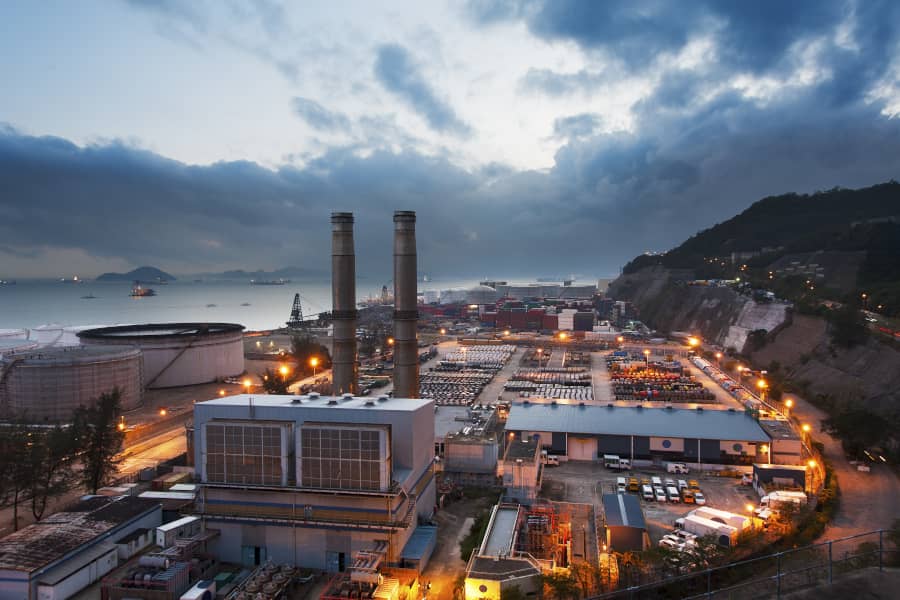Potential pitfalls of PPPs in the utilities sector

Writing exclusively for Energy & Utilities, Bob Bryniak looks at the potential hazards facing PPP projects in the power and water sectors, and what utilities and developers can do to reduce risk
By Bob Bryniak
No one can deny the fact that public-private-partnerships (PPP) have been successful in the power and water sectors across the GCC. Following a slow beginning in 1994 with Oman’s launch of the first successful independent power plant (IPP), United Arab Emirates launched the first successful independent water and power plant (IWPP) in 2002.
And it has been steady growth ever since, most recently with Saudi Arabia entering the water market in 2019 with the successful signing of two massive independent water projects (IWP) and the Kingdom’s first of two independent sewage treatment plants (ISTP), with a lot more in the pipeline. Renewable energy projects have also recently taken off following a slow start. Today, the power and water sectors stand out as embracing one of the most successful PPP Models in the GCC, with more than 50 plants in place and seemingly operating smoothly.
Oman and United Arab Emirates (Abu Dhabi in particular) lead the market in terms of number of successful PPPs in power and water.
As shown in the table below, these territories also represent the two standard PPP models that have evolved over time. PPPs in Oman: have shorter concessions, with most IPPs and IWPPs set at 15 to 20 years versus 25 years in Abu Dhabi; are typically build-own-operate (BOO) while they are build-own-operate-transfer (BOOT) in Abu Dhabi; allow for 100 per cent private sector ownership while they are restricted to 40 per cent in Abu Dhabi; have severe termination restrictions (ie: project company cannot terminate the agreement) with standard termination provisions in Abu Dhabi; and, have a requirement to partially list on the local stock exchange within a specified time period, with no such requirement in Abu Dhabi. All of the other GCC countries follow either one of these models or a variant of the two.
|
Feature |
Oman |
Abu Dhabi |
|
Concession Period |
15 to 20 years |
25 years |
|
Contractual Structure |
BOO |
BOOT |
|
Private Sector Ownership |
100% |
40% |
|
Termination Provisions |
Can Not Terminate |
Standard Termination Clauses |
|
Stock Listing Requirements |
Must IPO min 35% |
No Requirements to IPO |
Success is gauged by several measures. There is no question that both power and water tariffs have fallen, due in part to increased competition and developer acceptance of the PPP structure. Tariffs in the water sector specifically have fallen drastically over the last few years, finally breaking the 50 $cent per m3 barrier last year, with most recent tariffs shattering the 30 $cent barrier.
Plant operating efficiency, especially in terms of energy usage measured by BTUs per kwh generated and kwh per m3 of water produced has improved significantly. While there have been a few instances of major unplanned outages in both power and water plants over the years, reliability of supply has generally set high standards. Those PPPs that have had to list on local stock exchanges have all been positively received by the market, and procurers awarding PPPs all reached financial close. And so far, there have not been any major contractual disputes that resulted in termination of any PPP in the power and water sector.
In view of the above, the power and water sectors throughout the GCC appear to be in PPP Utopia. What could possibly go wrong? In two words – another Hyflux.
Up until 2017, Hyflux was regarded as one of Singapore’s greatest success stories. Starting back in 1989 as a three-person outfit with only $15,000 in invested capital, under the leadership of Olivia Lum, the business evolved into a major conglomerate, with annual revenues plateauing at just over $611 million by the end of 2016. Needless to say, revenues dropped sharply a year later, falling by nearly 65 per cent along with the company’s first major recorded loss in 25+ years of operation – minus $86 million in net income. Hyflux suspended trading in its share and related securities in 2018, and the company has been trying to restructure its business ever since.
A number of CEO, senior management and board strategic decisions led to Hyflux’s fall from grace, the most damaging being its decision to divert away from its core business and enter the power market. The resultant loss in revenues was devastating, and the impact this has had on the company’s financial performance was irreversible. The company was already leveraged to the hilt and was not in a position to acquire any more debt. Based on its own financial records, in December 2016, Hyflux’s net gearing stood at 87 per cent, increasing to 120 per cent a year later in December 2017.
What is important to note with Hyflux is that it gambled on only one project and lost. But that one project cost the company hundreds of millions of dollars and eventually bankrupted the business. Moreover, as the financial performance deteriorated, the company had to squeeze costs elsewhere, putting added pressure on many of its other projects, especially in the Middle East and North Africa.
Highly leveraged
In many ways, Hyflux is not unlike many developers in the power and water sector operating throughout the GCC. They tend to be highly leveraged, with many geared at 80 per cent to 90 per cent. And it is not unusual for some developers to even borrow the funds to make the initial equity investment in the independent project. In other words, some PPP projects can be 100 per cent debt financed. A major power and water developer with 10 to 15 PPP projects on its books valued in the $billions, may only have a small fraction of that in equity. One major technical issue with one of these projects and the developer could face a serious liquidity challenge, as Hyflux did.
If the technical issue results in the project company’s inability to deliver either water or power or both, then there is a risk of losing capacity charges. A temporary drop can be tolerated for a few months, and possibly even longer if a reserve fund is set aside for this purpose. But a fall in capacity charges over a long enough period of time could be devastating and create significant liquidity issues for the business. And there are other factors that could adversely impact a project company’s cash flows.
Not that long ago, Oman Power and Water Procurement Company (OPWP) informed a number of its project companies supplying power and water that it may temporarily curtail payments in light of the constrained fiscal environment facing the country. OPWP was considering holding back the power (and water) capacity investment charge payable to several project companies under their Power (and Water) Purchase Agreement. As noted above, a short term hold back is manageable, but a longer term hold back could lead to serious liquidity issues and would certainly cause lenders to be nervous.
This would likely have had a major negative impact on Oman’s, and possibly other GCC countries’, ability to launch further power and water projects and have them successfully financed on a non-recourse basis. Fortunately, the Ministry of Finance in Oman reassured producers of power and water that they would indeed be fully paid, and a potential crisis was averted.
As a side note, an interesting aspect of the situation in Oman is that project companies are not contractually permitted to “terminate” their power (and water) purchase agreements for any reason, even in the event of non-payment. Their only recourse for a breach of contract or default on behalf of the procurer (ie: non-payment) is through the local courts. As noted earlier, this is a unique feature of power and water agreements in Oman. Standard termination clauses appear in most other power and water purchase agreements throughout the GCC.
If power and water developers are highly leveraged and they face a problem with one of their projects that could result in significantly higher costs or much lower revenues or some combination of the two, then the procurer may face yet another Hyflux situation with a major power and/or water developer facing a cash flow challenge with one or more of its on-going projects. And the risk of this occurring is much higher with projects that are highly leveraged.
New projects in the water sector have the added pressure of having to bid low prices to secure a contract and live with lower profit margins. Faced with a future cash flow crunch, a developer is likely to squeeze its plant operating costs, especially if it is not in a position to raise more debt or inject equity into the project. And of course, squeezing operating costs can affect the plant’s overall performance and long-term operational viability. This would not bode well for the procurer who has a mandate to ensure a reliable and continuous supply of both power and water.
A procurer can take certain action to mitigate this particular risk. For instance, stringent minimum eligibility requirements (“MERs”), in particular strong financial capability, along with significant development experience and operating and construction experience can be imposed on developers and maintained during the concession period. The larger and more complex the project, the higher the standards should be in setting MERs. Relaxing them may make it easier to have more developers and EPC Contractors involved with in project, but unfortunately, such practice increases the risk of future plant outages that may in turn adversely impact a Project Company’s cash flows.
Adopting strict minimum functional specifications during the tendering process is also well advised. The more these are relaxed, the greater the likelihood that the plant will have future problems, leading to potential cash flow issues. Equally important is to apply technical rigor during implementation, ensuring that the plant design is optimized and that corners are not being cut during construction. There is no question that a well-designed and constructed plant will have fewer operation and maintenance issues later on.
It is also advisable to restrict monopoly concentration in both the power and water markets, as it is rarely good practice to place all your eggs in one basket. The higher the concentration ratio for a particular developer, the greater the risk that future performance issues will be encountered, especially if the parent company is faced with cash flow issues that results in a squeeze on operating cash flows.
These actions will help to ensure that the PPP model continues to thrive, though no guarantee that another developer won’t face a major cash flow issue, especially given the added pressure to bid lower prices and accept relatively low profit margins to secure a PPP these days.
Robert (Bob) Bryniak is CEO of Golden Sands Management (Marketing) Consulting, a UAE-based establishment that specialises in the provision of strategic management services to both private and public sector companies in the power and water sector throughout the GCC. He has more than 30 years of experience in the power and water sector. As an independent adviser, he provides due diligence services and financial valuations, along with market analysis and business development. He can be reached at [email protected]
Energy & Utilities - Middle East and Africa Market Outlook Report 2024.
This must-have report for industry players offers a thorough understanding of the latest developments, challenges, and opportunities in the region, supported by data, analysis, and expert insights.








